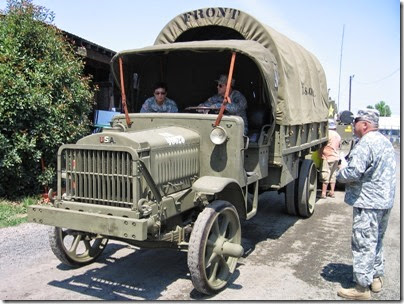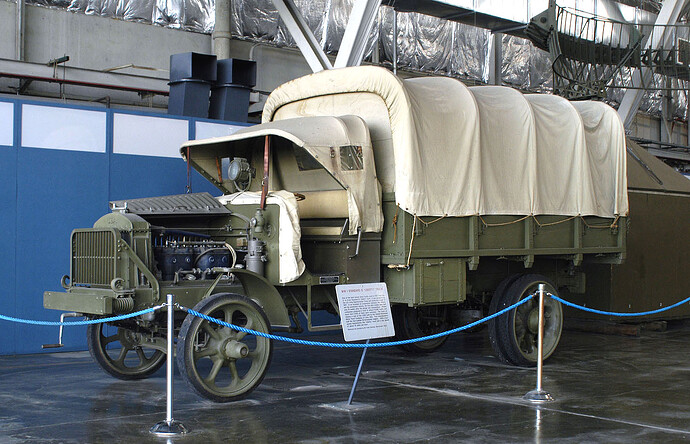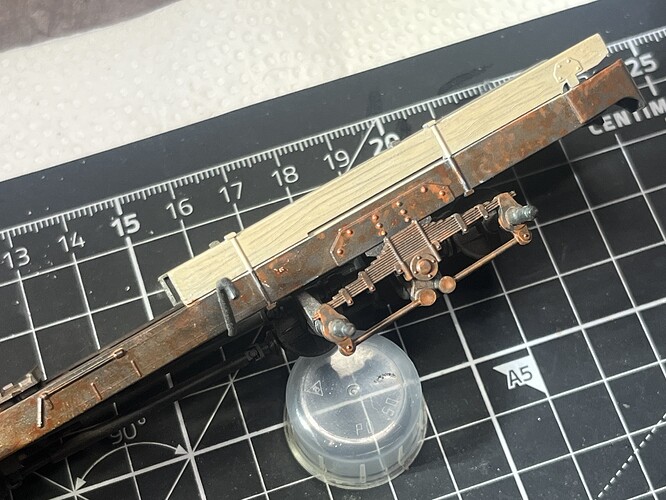Looking really good Paul. Its not a truck or kit I would be bothered with, but you are making it look great. The paint and chassis weathering are lifting it right up and giving it a real genuine used look. Very neat work on the detailing you have done as well.
Only a few made it to Europe before the Armistice but more arrived afterwards. I understand these were all the higher-spec Series Ones, and the majority were sold off, many to private ownership. They soldiered on for decades, there’s one in the U.K. that’s still going…
For anyone reading and contemplating a build, I believe it is best to by the Series Two kit as you can build the Series One from it and have more useful bits left over, like another set of wheels.
Cheers,
M
Just to clarify Tom if you thought I was being negative … I meant it wouldnt be a kit type I would be interested in, … I am just stuck in a self imposed rut about what types/periods interests me in general. I do enjoy looking at how people build other types and its always great to see how much effort builders put into their work whether its a fully pimped up crazy extra PE/AM beast or a straight out the box build. ![]()
![]()
Sorry if I came over as being critical, I just wanted to give a heads-up as to possibilities opened up by the kit. Along with the FWD (which was a commercial vehicle design both before and after WW1) they lasted a long time and many received a variety of upgrades such as enclosed cabs, wheels with pneumatic tyres, and sometimes new motors. There’s a host of possibilities for the non-military vehicle modellers. I have a Roden 1:72nd FWD Ammunition Wagon awaiting being civilianised for steampunk purposes…
As for the “self-imposed rut”, I could do with a bit of that - it’s better charachterised as self-discipline. I have little of the latter, a tendency to think of alternative uses for an item, no ability to stick with anything, a weakness for special offers, and little to inhibit me other than a deep-rooted disinclination to spend money (at least not wisely).
Regards,
M
So I take it that in the Series 2 Liberty truck they give you BOTH sets of wheels and lights???
Boy I wish I had known. I went with the Series 1 truck. Would love to have had the choice of wheels etc.
I don’t have one so I can’t be certain but I seem to recall it was that way when I looked at the ICM site.a while back, but I’ve just been back and the 2nd series Liberty has disappeared and with it the link to it’s instructions…
The wooden 1st Series wheels are on the main frame so the metal 2nd Series would have to be on another frame.
Edit:
Found them!

Regards,
M
A lot of guys are comfortable in a narrow band of interest for themselves, but appreciate other people’s work outside that band. There is nothing wrong with that. There are a lot of builds here that I follow, but would never acquire the kit myself. There have also been times where following a build peaked my interest enough to tempt me to buy and build a kit I would not normally consider.
It would be a boring world if everyone liked the same things. VIVE LA DIFFÉRENCE
Well on that sprue I see the metal wheels, the carriage lamp style gas headlights, the alternate cowl, and the carbide gas generator. I do wish I had waited for the Series 2 instead of buying the Series 1 early on.
I am happy with this one but may need to buy the other as well! Darn!
But first I will need to finish my WIP Holt Tractor and my FWD truck.
If you find it post it here. ICM also make a kit of the second series Liberty Truck with the steel wheels and I may have to build that one too. I do want to try the stamping trick on the USA again just for fun.
Paul
That part MAY be a carbide generator but it is more likely a vacuum fuel pump. These were very common in the era and were typically fitted to the firewall inside the engine compartment. This example has it mounted outside probably due to limited space. Here is a picture of one:
Paul
Sorry but that is a “Solar” gas generator for the headlights.
If it were a vac fuel pump then the Series 1 vehicle with electric lights would have one also and it does not.
On the First Series the fuel was gravity fed from a fuel tank behind the dash board, the Second Series added an Auxiliary tank under the passenger seat with a manual transfer pump on the right of the seat.
Cheers,
M

FYI ~ As to fuel pumps of the day: Early race cars of this era had a driver and a co-driver. The co-driver’s primary job was to operate the manual fuel pump.
The Solar gas unit only powered the Searchlight. The other “lights” were all the very traditional oil fired carriage lights as used since the 1800s.
Found online:
Around 22 gallons
- The truck has a maximum fuel capacity of around 22 gallons which includes the primary dash-mounted fuel tank and a larger reserve tank mounted under the right-hand side of the seat box.
So fuel feed to the carburetor on the later Series B was still via gravity feed but the firewall mounted fuel tank could be / was replenished from the tank under the seat using the manual fuel transfer pump.
More reference on the Liberty Truck can be found here in the archives:
Sadly the majority of reference photos did not survive the archiving process.
https://archive.armorama.com/forums/50451-ord=-page=1/index.htm
Right, just listen will you… Stop it with all this fantastic weathering and rusting effects you are doing … its hacking me off completely … !!! (ok, you can do a bit more ) ![]()
Another detail that was (sadly) left off of the Liberty Truck were the two little etched belts to hold down the front edge of the carriage style, “Doctor’s buggy” cloth top.
A feature absolutely necessary if you were going to have the top up during any sort of wind as otherwise it will simply fold back upon itself.
 .
.
Not at all happy with how mine turned out but until something better comes along these hold down straps will have to do. (Should have used small strips of paper tape instead.)
Beautiful rust! - I love a well done rust affect!
Those pictures would seem to settle that issue. Some questions arise from that. Where was the generator on the first series? Was there a Prestolite tank under the seat? Why an acetylene lamp at all? The first series had an electrical system. Why not an electric search light? Acetylene lamps are a PIA in general and the generator in particular. Someone years back converted the gas lamps on my 1914 Ford to electric & I have not spent much time trying to find the correct parts to make it original. Perhaps the big gas lamps were still brighter than the electric equivalent? Perhaps they took too much current for the electrical system?
Paul
There were still some great photos in the Armorama post that would have been very helpful had I found them earlier.
Gravity fed fuel systems are not always reliable. In the Model T world there is a term for a very steep hill. They are called “ten gallon” hills as a low fuel level in the tank can starve the engine of fuel, one reason why some hills had to be backed up in a T in the old days.
Paul







